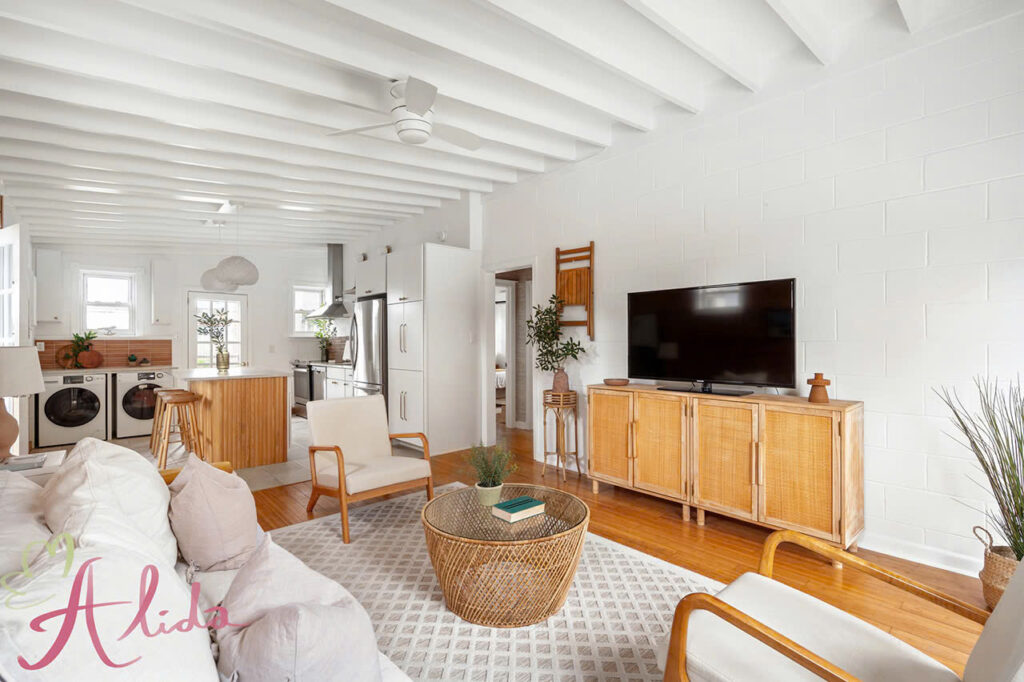The lens you choose plays a crucial role in the outcome of your photos. Different lenses offer unique advantages depending on your photography style. Among these, the 24mm lens stands out as one of the most versatile and widely used options. Whether you’re shooting street, landscape, or travel photography, the benefits of the 24mm lens make it an essential tool for any photographer. This article explores how the 24mm lens can enhance your photography.
Benefits of 24mm Lens in Photography
Choosing the right lens is a fundamental decision in photography. The lens dictates not only the field of view but also how the subject is captured, the depth of field, and the overall feel of the image. Wide-angle lenses like the 24mm lens are known for their ability to capture expansive scenes and unique perspectives. A wide field of view helps you create dynamic compositions that convey more of the environment, giving depth and richness to your photos.
Why the 24mm Lens is a Popular Choice Among Photographers
The 24mm lens is praised for its versatility, making it a favorite among photographers. It offers a balanced focal length, providing more coverage than standard lenses like 50mm or 85mm without the extreme width of ultra-wide lenses.
The benefits of the 24mm lens in street photography include capturing close-ups while maintaining environmental context. For travel and landscape photography, its wide field of view is perfect for expansive scenes and detailed architecture.
Using the 24mm Lens for Street Photography
Street photography often demands quick, decisive shots with minimal equipment. The 24mm lens is ideal for this type of photography for several reasons:
- Why the 24mm Lens is Ideal for Street Photography
According to Nicoharold Photography and Photogenic Mind, the 24mm lens is perfect for street photography because it allows you to capture a broader scene without distorting the perspective. It enables you to get close to your subject, often without intruding on them, while still capturing the surrounding environment. This creates a sense of place, making the images more engaging and dynamic. - Benefits of Using a Wide-Angle Lens for Dynamic and Candid Street Scenes
Wide-angle lenses like the 24mm lens give street photographers the flexibility to shoot in tight spaces. The wider field of view helps to incorporate more elements into the frame, such as the crowd, architecture, or other environmental details, which adds depth and context to your photos. It also allows for capturing spontaneous moments, without the need to zoom in or move around too much, thus preserving the candid nature of street photography.
Benefits of 24mm Lens for Travel Shots
For travel photographers, the 24mm lens is a fantastic choice for shooting landscapes, cityscapes, and architectural details. It’s small, lightweight, and capable of capturing wide-angle shots without the bulk of a larger lens. The 24mm lens offers the following advantages for travel photography:
- Why the 24mm Lens is Perfect for Landscape and Architecture Shots in Travel Photography
As Journey of Doing highlights, the 24mm lens is excellent for shooting vast landscapes, mountain ranges, and city skylines. It allows you to fit more into the frame, making it perfect for expansive views. In architectural photography, the 24mm lens captures the full scale of buildings and structures without warping or distortion, giving you clear, detailed images. - Techniques to Make the Most of the 24mm Lens on Travel Shoots
To get the most out of the 24mm lens while traveling, focus on composing shots that showcase both the subject and the environment. Experiment with foreground elements, leading lines, and dramatic skies to add interest and depth to your travel shots. With the wide field of view, you can also capture more of the story, making your photos feel more immersive and engaging.
Challenges of Using the 24mm Lens
While the 24mm lens is incredibly versatile, there are some challenges photographers must consider:
- Common Issues Photographers Face with the 24mm Lens and How to Overcome Them
As noted by Fstoppers and The Photography Toolkit, one of the most common issues with wide-angle lenses is distortion, especially when shooting at the edges of the frame. This can cause straight lines to appear curved, which may not always be desirable, particularly in architectural photography. However, modern lenses and editing software can help minimize distortion, allowing you to correct these issues during post-processing. - Handling Distortion, Focus Range, and Other Challenges with the 24mm Lens
Another challenge is managing depth of field. Since wide-angle lenses capture more of the scene, achieving a shallow depth of field can be difficult. To combat this, use a smaller aperture to ensure both the foreground and background are in focus. Additionally, be mindful of your focus points and composition to avoid distractions or loss of sharpness in certain areas of the frame.
Discover Benefits of 24mm Lens for Stunning Shots
To fully maximize the benefits of the 24mm lens, photographers must understand how to create impactful compositions:
- Creating Depth and Unique Perspectives
As noted by Eric Kim Photography and The Phoblographer, the 24mm lens adds depth by positioning subjects in the foreground while letting the background fade. Use perspectives and leading lines to guide the viewer’s eye. - Maximizing the Lens’s Capabilities
To get the most out of the 24mm lens, experiment with wide compositions and unusual angles. This lens excels at capturing scenes with a strong sense of place, so try to incorporate as many elements of the environment as possible into the frame. Pay attention to lighting and shadows to further enhance the drama and depth of your images.
Comparing the 24mm Lens to Other Lenses
While the 24mm lens is great for many situations, it’s important to compare it to other wide-angle lenses to see where it shines:
- Why the 24mm Lens Might Be a Better Choice Compared to Other Wide-Angle Lenses Like 35mm or 50mm
The 24mm lens offers a wider view than the 35mm lens, making it more suited for capturing larger scenes. It also provides more flexibility in tighter spaces, while the 50mm lens may feel too zoomed-in for certain types of photography. - Situations Where the 24mm Lens is the Best Option
The 24mm lens is best for situations where you need to capture wide scenes, such as landscapes, street scenes, and architecture. It provides the flexibility of wide-angle shots without excessive distortion, making it a go-to lens for many photographers.
Conclusion
The 24mm lens is highly versatile, ideal for street, travel, and architectural photography. Its wide perspective, depth, and natural look help photographers capture stunning images.
For expert real estate photo editing, contact Alida’s Photo Editing Services at photonews121@gmail.com.








